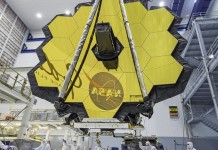Sun: The origin of Earth’s seas and oceans, one of the mysteries that has caught the attention of scientists for centuries, may have been unraveled by researchers at the Universities of Curtin, Australia, and Glasgow, Scotland. According to the research, the likely source of water on our planet is the Sun. Surprisingly, the result is described by lead researcher Luke Daly as “half a glass of sun in every glass of water.”
In this sense, the solar wind may have played a key role in this “transport” of water to Earth. Is that these particles from the solar corona are made up mainly of hydrogen ions that, when in contact with oxygen atoms present in the rock of asteroids, can produce water.
The conclusions were based on previous studies of meteorites, in which these space-traveling rocks were found to be surprisingly rich in water, although not exactly what we have in our seas, as they contain deuterium, a heavier isotope of hydrogen. However, it is possible that, at the beginning of Earth’s history 4.6 billion years ago, asteroids brought in the water needed for our planet to become habitable.
Drawing water from the stone
The ratio of deuterium to hydrogen (D/H) in Earth’s water is 1.56 × 10 –4, but astronomers have found different D/H ratios in the solar system. Study co-author Professor Phil Bland explains in a statement that the solar wind may have created water “on the surface of small dust grains and this isotopically lighter water likely provided the rest of Earth’s water.”
This theory of the solar wind was built on a detailed, “atom-by-atom” analysis, according to Bland, of fragments from the asteroid Itokawa, samples of which were collected in space and brought to Earth by the Japanese probe Hayabusa in 2010. An analysis by the system Curtin’s atomic probe CT scan revealed that the first 50 nanometers of Itokawa’s surface contained water at the rate of 20 liters per cubic meter of rock.
This water is produced by so-called space weathering. Hydrogen ions present in the solar wind, called hydrons, penetrate the dust grains, where they oxidize the minerals, initially creating hydroxyl (HO) which is made up of one hydrogen and one oxygen atom. Later, water (H2O) forms, impregnating clouds of dust that, according to Daly and his team, “rained” on a young Earth in the early days of the solar system.




